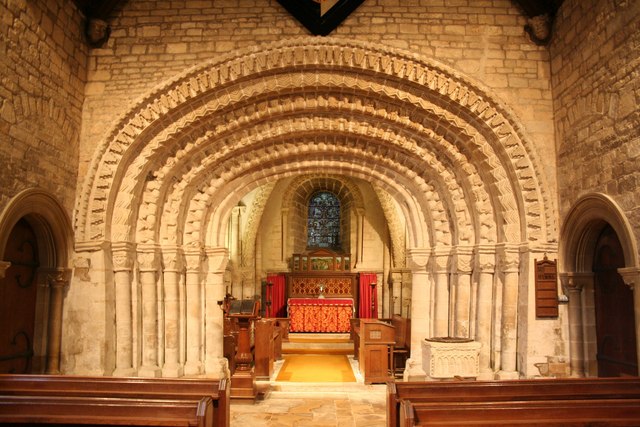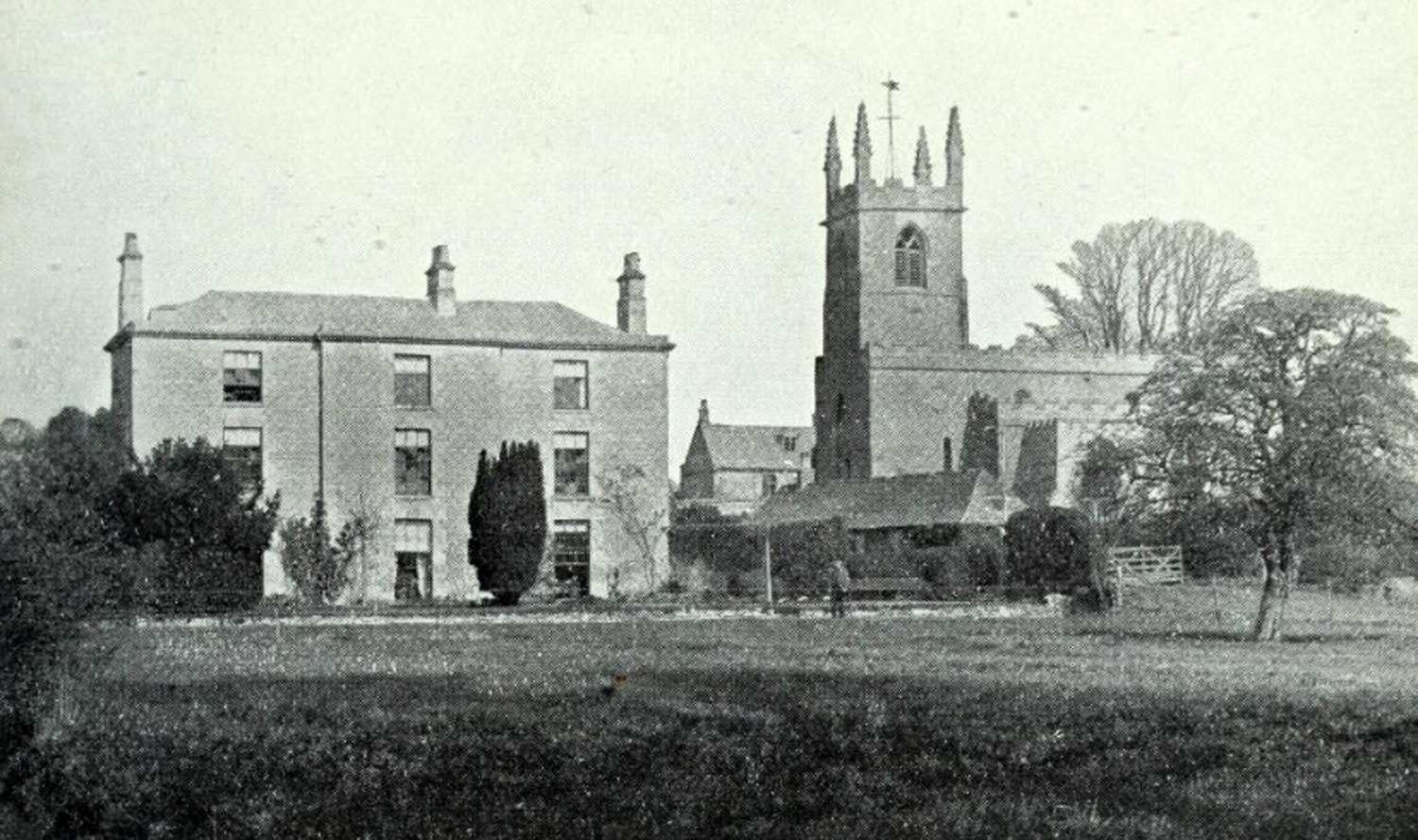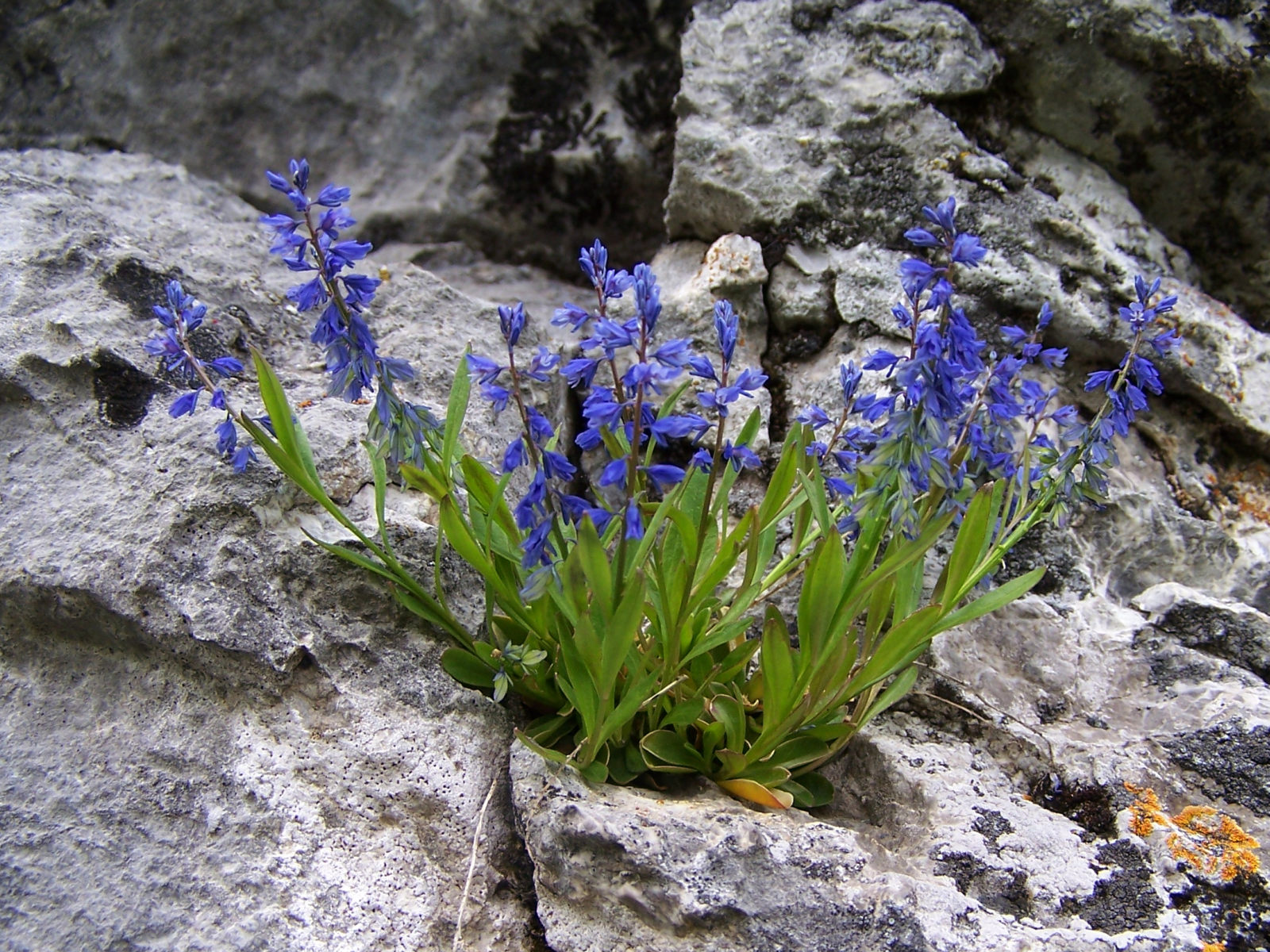|
Tickencote
Tickencote is a small village and civil parish in the county of Rutland in the East Midlands of England. It is noted for St Peter's Church, Tickencote, St Peter's Church, with its Norman chancel arch. The population at the 2001 census was 67. At the 2011 census the population remained less than 100 and was included together with the parish of Great Casterton. Geography The parish essentially stretches along the A1 road (Great Britain), A1 (Ermine Street) from the Bloody Oakjunctionto the Casterton junction. At the far north of the parish, the Warren Plantation is on the north-east side of the A1. To the north-west is Empingham. On the southern edge of Exeter Gorse, it borders Great Casterton. The boundary with Great Casterton to the B1081 road, B1081 junction is one field's width north-east of the A1, running parallel to the carriageways, passing the eastern edge of Tickencote Warren farm. It crosses the A1 at the B1081 junction 200 metres west of the A1 bridge where it crosses th ... [...More Info...] [...Related Items...] OR: [Wikipedia] [Google] [Baidu] |
St Peter's Church, Tickencote
St Peter's Church, Tickencote is a Church of England parish church in Tickencote, Rutland. Apart from the chancel arch and the sexpartite vaulting in the chancel, which are Norman and date from the mid 12th century, the building was rebuilt in 1792 at the expense of Miss Eliza Wingfield by the architect Samuel Pepys Cockerell. In 2019 the church passed into the care of the Churches Conservation Trust. While St Peter's underwent significant repair, the church was closed to visitors until June 2022. Architectural description The church consists of a three bay nave, a chancel, tower of two storeys and a bell-stage on the south side and a transept on the north side which is used as a vestry. The tower also acts as an entrance porch. The church is built of the local limestone with Collyweston slate roofs and coped gables. Chancel The church now consists of a chancel with a sexpartite vault. The vaulting with its carving is original but may have been re-constructed when 1792 the ... [...More Info...] [...Related Items...] OR: [Wikipedia] [Google] [Baidu] |
Great Casterton
Great Casterton is a village and civil parish in the county of Rutland in the East Midlands of England. It is located at the crossing of the Roman Ermine Street and the River Gwash. Geography The village is approximately three miles to the north-west of Stamford and very close to the county border with Lincolnshire (South Kesteven). Just to the north is Tickencote. The parish boundary, to the south and east, lies close to the village, and follows the River Gwash. Just west of the B1081 bridge over the Gwash, it borders Tinwell. Just to the west of Ingthorpe (part of Tinwell), it borders Tickencote. The parish boundary crosses the A1 at the turn off for the village. The boundary then follows the A1 north, along the next hedge to the east (a field's width). It passes to the east of Tickencote Warren, and atExeter Gorseit briefly borders Horn, then meets Pickworth. It passes to the south of Eayres Lodge, includes Woodhead, crossing ''Pickworth Road'' south oTaylor's Farm West of ... [...More Info...] [...Related Items...] OR: [Wikipedia] [Google] [Baidu] |
OK Diner
The OK Diner is a privately owned roadside restaurant chain in the United Kingdom. The restaurants have a retro, 1950s-style American diner theme with popular 1950s music, chequerboard flooring, booth seating, plenty of chrome details and 1950s memorabilia on the walls. The concept was created by John Roebuck and Tony Horsfall for City Centre Restaurants (now The Restaurant Group) and was sold to co-directors Ian Hendry and Dafydd Poole in a management buyout in 2001. In 2014, Poole bought out his partner. As of , the chain has eight operating restaurants. Current locations The chain OK Diner had eight restaurants by September 2011. * A5 — Bridgtown, Staffordshire * A49 — Leominster, Herefordshire * A55 — Northop Hall, Flintshire * A1 — Tickencote, Rutland * A1 — Colsterworth, Lincolnshire * A1 — Carlton-on-Trent, Nottinghamshire * A19 — Elwick, County Durham * A38 — Egginton, Derbyshire Derbyshire ( ) is a ... [...More Info...] [...Related Items...] OR: [Wikipedia] [Google] [Baidu] |
Thymus Vulgaris
''Thymus vulgaris'' (common thyme, German thyme, garden thyme or just thyme) is a species of flowering plant in the mint family Lamiaceae, native to southern Europe from the western Mediterranean to southern Italy. Growing to tall by wide, it is a bushy, woody-based evergreen subshrub with small, highly aromatic, grey-green leaves and clusters of purple or pink flowers in early summer. It is useful in the garden as groundcover, where it can be short-lived, but is easily propagated from cuttings. It is also the main source of thyme as an ingredient in cooking and as an herbal medicine. It is slightly spicier than oregano and sweeter than sage. The Latin specific epithet ''vulgaris'' means “common” in the sense of “widespread”. Cultivars Numerous cultivars and hybrids have been developed for ornamental purposes. Nomenclature can be very confusing. French, German and English varieties vary by leaf shape and colour and essential oils. The many cultivars include ' ... [...More Info...] [...Related Items...] OR: [Wikipedia] [Google] [Baidu] |
Gentiana Amarella
''Gentianella amarella'', the autumn gentian, autumn dwarf gentian, or autumn felwort, is a short biennial plant flowering plant in the gentian family, Gentianaceae. It is found throughout Northern Europe, the western and northern United States, and Canada. Description ''Gentianella amarella'' the autumn gentian, autumn dwarf gentian, or autumn felwort is a biennial herbaceous plant, which only produces a low leaf rosette with elliptical to lanceolate leaves in its first year. In the second year it usually grows a stem from 5 to 30 (3 to 50) centimeters long. The stem is straight or branched just above the base; at flowering time it is without leaves which distinguishes it from similar species. Generative characteristics The flowering period is from July to early October, and the axils produce numerous flowers. The relatively small, hermaphrodite flowers are purplish bells (reddish-violet corolla) are trumpet-shaped between 12 and 22 mm long and have five petals with d ... [...More Info...] [...Related Items...] OR: [Wikipedia] [Google] [Baidu] |
Blackstonia Perfoliata
''Blackstonia perfoliata'' or yellow-wort is a species of flowering plant in the family Gentianaceae found around the Mediterranean Basin, but extending into northwestern Europe. Description Yellow-wort grows tall, with stiff, branching stems. The leaves are glaucous, opposite and entire, the upper ones perfoliate, being united at the base. It bears terminal cymes of bright yellow, stalked flowers, across. The calyx is deeply divided into 6–10 linear lobes or sepal A sepal () is a part of the flower of angiosperms (flowering plants). Usually green, sepals typically function as protection for the flower in bud, and often as support for the petals when in bloom., p. 106 The term ''sepalum'' was coine ...s, spirally arranged, free or nearly free from each other at the base and shorter than the corolla. The petals number six to ten and form a short tube. There are six to ten adherent stamens and a two-lobed stigma.McClintock D. and Fitter, R. ''The Pocket Guide ... [...More Info...] [...Related Items...] OR: [Wikipedia] [Google] [Baidu] |
Hippocrepis Comosa
''Hippocrepis comosa'', the horseshoe vetch, is a species of perennial flowering plant belonging to the genus '' Hippocrepis'' in the family Fabaceae. Description The overall appearance depends on its habitat: sometimes it forms upright clumps of flowers; at other times, it sends prostrate leafy runners over a wide area; sometimes it distributes itself as single flowers. The flowers are small, yellow or sometimes orange/red (becoming yellow as they mature), and of typical shape for the family Fabaceae: these appear for a period of two weeks around May.. Propagation The rate of seed production is variable: relatively low and sometimes negligible seed production. Seedlings remain the predominant method of extending its range. It has a low germination rate in the wild, although this can be improved in nurseries. Distribution ''Hippocrepis comosa'' is found in the UK, predominantly in the south.. Habitat ''Hippocrepis comosa'' is a calciole (found only on chalk and lim ... [...More Info...] [...Related Items...] OR: [Wikipedia] [Google] [Baidu] |
Polygala
''Polygala'' is a large genus of flowering plants belonging to the family Polygalaceae. They are commonly known as milkworts or snakeroots. The genus is distributed widely throughout much of the world''Polygala''. Flora of China. in zones and the .''Polygala''. The Jepson eFlora 2013. The genus name ''Polygala'' comes from the |
Lincolnshire Limestone
The Lincolnshire Limestone Formation is a geological formation in England, part of the Inferior Oolite Group of the (Bajocian) Middle Jurassic strata of eastern England. It was formed around 165 million years ago, in a shallow, warm sea on the margin of the London Platform and has estuarine beds above and below it. The maximum known thickness is 40.2 metres, at around TF9730, while four kilometres further west it is 18.3 metres thick at its outcrop in the upper Witham valley. It fades out in the south, around Kettering in Northamptonshire. There are two sub-divisions, the Upper and Lower Lincolnshire Limestone Members respectively. The dividing marker is the 'Crossi' bed which is distinguished by the fossils of ''Acanthothris crossi'' it contains. The Crossi bed forms the top of the Lower Lincolnshire limestone. The bottom of the Lower Lincolnshire limestone has some of the characteristics of the underlying Lower Estuarine Series, in that it tends to contain more than usual amoun ... [...More Info...] [...Related Items...] OR: [Wikipedia] [Google] [Baidu] |
Site Of Special Scientific Interest
A Site of Special Scientific Interest (SSSI) in Great Britain or an Area of Special Scientific Interest (ASSI) in the Isle of Man and Northern Ireland is a conservation designation denoting a protected area in the United Kingdom and Isle of Man. SSSI/ASSIs are the basic building block of site-based nature conservation legislation and most other legal nature/geological conservation designations in the United Kingdom are based upon them, including national nature reserves, Ramsar sites, Special Protection Areas, and Special Areas of Conservation. The acronym "SSSI" is often pronounced "triple-S I". Selection and conservation Sites notified for their biological interest are known as Biological SSSIs (or ASSIs), and those notified for geological or physiographic interest are Geological SSSIs (or ASSIs). Sites may be divided into management units, with some areas including units that are noted for both biological and geological interest. Biological Biological SSSI/ASSIs may ... [...More Info...] [...Related Items...] OR: [Wikipedia] [Google] [Baidu] |
Bloody Oaks Quarry
Bloody Oaks Quarry is a biological Site of Special Scientific Interest north-west of Great Casterton in Rutland. It is owned and managed by the Leicestershire and Rutland Wildlife Trust. This site has species-rich grassland on Jurassic limestone. The dominant grasses are tor-grass and upright brome and flora include rock-rose, salad burnet, yellow-wort and autumn gentian. The site is open to the public. The name alludes to the 1470 Battle of Losecoat Field The Battle of Losecoat Field (also known as the Battle of Empingham) was fought on 12 March 1470, during the Wars of the Roses. Spellings of "Losecoat" vary, with "Losecote" and "Loose-coat" also seen. The battle secured the defeat of the poor ... (also known as the Battle of Empingham). There is mention of Bloody Oaks Wood from circa 1800.''The Place-Names of Rutland'' by Barrie Cox (EPNS, 1994), p14 References {{SSSIs Rutland Sites of Special Scientific Interest in Rutland Leicestershire and Rutland Wildlife ... [...More Info...] [...Related Items...] OR: [Wikipedia] [Google] [Baidu] |
Bloody Oaks Quarry - Geograph
''Bloody'', as an adjective or adverb, is a commonly used expletive attributive in British English, Australian English, Irish English, Indian English and a number of other Commonwealth nations. It has been used as an intensive since at least the 1670s. Considered respectable until about 1750, it was heavily tabooed during c. 1750–1920, considered equivalent to heavily obscene or profane speech. Public use continued to be seen as controversial until the 1960s, but since then, the word has become a comparatively mild expletive or intensifier. In American English, the word is used almost exclusively in its literal sense and is seen by American audiences as a stereotypical marker of British English, without any significant obscene or profane connotation. Canadian English usage is similar to American English, but use as an expletive adverb may be considered slightly vulgar depending on the circumstances. Origin Use of the adjective ''bloody'' as a profane intensifier pred ... [...More Info...] [...Related Items...] OR: [Wikipedia] [Google] [Baidu] |






